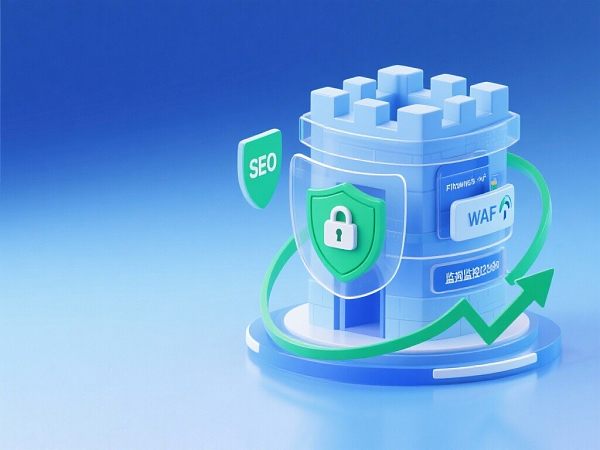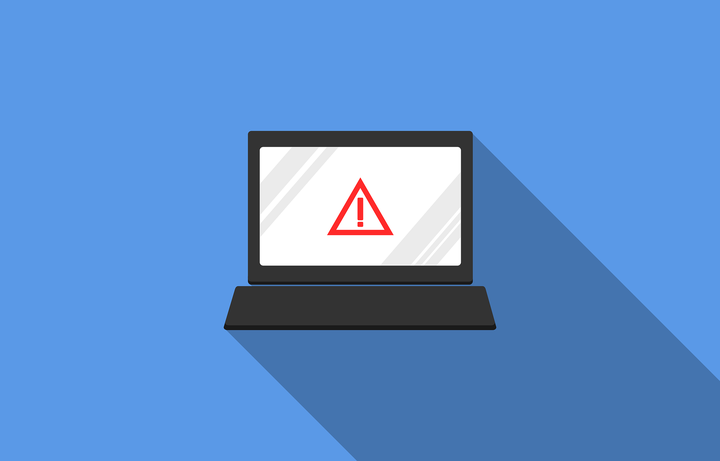I. The Core Definition of Website Security and its Strategic Relationship with SEO Ranking
1. The authoritative definition of website security
Website security refers to a series of technical and management measures taken to ensure that a website and its hosting environment (servers), application layer (CMS/code), and data transmission (HTTPS) are protected from unauthorized access, damage, modification, or disclosure. Its goal is to safeguard the website's confidentiality, integrity, and availability, while protecting user privacy and data.

2. Three Key Relationships Between Website Security and SEO Ranking
Search engines (such as Google) consider website security a **key ranking signal and EAT (Authority) metric**:
- **HTTPS as a Ranking Mandate:** The HTTPS protocol (encrypted transmission) is a **clearly announced ranking factor** by Google. Insecure websites (HTTP) not only have limited rankings but are also marked as "insecure" by browsers.
- **Security Penalties and Index Removal:** If a website is hacked (e.g., by injecting malicious code or phishing pages), the search engine will immediately **issue a security warning, lower the ranking of all keywords, or even completely remove the website from the index**.
- **User Behavior Signals (EAT):** Website security issues can cause a surge in bounce rate and a decrease in dwell time, sending strong negative user experience signals to search engines and directly damaging the website's trustworthiness, thereby lowering the EAT score.
3. The Development History of Website Security
In the early 2000s, website security primarily focused on **server firewalls and simple password protection**. In the mid-2010s, with the increase in e-commerce and data interaction, **HTTPS began to gain popularity**, and the focus shifted to **data transmission encryption and application-layer vulnerability patching**. In the modern era (2020s to present), **website security** has evolved into a **full-stack, real-time monitoring dynamic defense system**, encompassing **AI-driven WAF, DDoS protection, and Content Delivery Network (CDN) security**, becoming an integral part of digital assets.
II. In-depth analysis of the five core technologies and principles of website security
Achieving a high level of website security requires mastering and deploying the following 5 core technical principles:
1. Principles of HTTPS/SSL/TLS Encrypted Transmission
Principle: SSL/TLS protocols are used to encrypt data transmitted between the client and server, ensuring that data is not eavesdropped on or tampered with during transmission. Application: Mandating HTTPS across the entire website and regularly updating SSL certificates. This is the foundation of website security and a mandatory requirement for SEO.
2. Application Layer Firewall (WAF) Defense Principles
Principle: WAF is deployed at the front end of a website. By **analyzing HTTP/HTTPS requests**, it identifies and blocks common application-layer attacks, such as **SQL injection (SQLi) and cross-site scripting (XSS)**. Technical Application: Configuring WAF rule sets allows for **real-time interception and threat intelligence updates** for CMS vulnerabilities (such as WordPress and Joomla).
3. DDoS/DoS Anti-DDoS Principles
Principle: Distributed Denial-of-Service (DDoS) attacks overwhelm servers with a large amount of forged traffic, causing websites to crash. Technical Application: By utilizing CDN networks and traffic scrubbing services, malicious requests and abnormal traffic are filtered out before reaching the origin server, ensuring the website's high availability.
4. The principle of least privilege and multi-factor authentication (MFA)
Principle: Any user, application, or system can only be granted the **minimum access permissions required to perform its function**. Technical Application: Enforce **multi-factor authentication (MFA)** on all backend, database, and FTP accounts, and regularly review user permissions to prevent **internal security issues or security problems caused by credential leaks**.
5. Zero Trust Network Architecture
Principle: Do not trust any user or device, **whether it is located inside or outside the network**. Technical Application: Strict authentication and authorization are applied to all access requests, which is crucial for protecting **internal management systems and data interfaces**.
III. Four Key Technical Features and Application Practices of Website Security
1. Technical Features: Automated vulnerability scanning and patch management
Features: **Website security** is an ongoing process. A professional security system employs **automated scanning tools** to regularly check for known vulnerabilities in **code, plugins, and themes**. Application: **Instant application of patches and updates**, especially for **high-risk plugins** in CMS systems like WordPress, is an effective means of preventing 80% of attacks.
2. Application Practice: Database and Input Validation Security
Practice: All user input (such as forms, comments, and search bars) must undergo **strict server-side input validation and cleanup** to prevent **SQL injection and XSS attacks**. Application: **Strictly encrypt and isolate** database connection information, and use **parameterized queries** instead of concatenating SQL statements.
3. Application Practice: Content Security Policy (CSP) Deployment
Practice: **Content Security Policy (CSP)** is a browser-level security feature. Application: By configuring CSP in the HTTP response header, you can restrict which sources the browser can load scripts, styles, and images from, effectively preventing malicious cross-site scripting (XSS) attacks and data injection.
4. Application Practice: Data Backup and Disaster Recovery Mechanisms
Practice: No matter how robust the security measures, a **comprehensive data backup and disaster recovery plan** is essential. Application: Implement **offsite, multi-version, regular full backups**, and be able to quickly restore to the pre-infection state after a **security incident**, ensuring business continuity and minimizing the **impact of security incidents on SEO**.
IV. Crisis Application and SEO Recovery Guide for Website Security Risks

1. Three common security risks
The main **website security** threats include: **1) Malware/Trojan implantation:** which can lead to websites being used for spam or phishing; **2) Data breaches:** especially involving sensitive data such as customers' personal information and credit cards; **3) Botnet and DDoS attacks:** which can render websites inaccessible, harming user experience and search engine crawling.
2. SEO Crisis Recovery Process After a Website is Hacked
If your website is unfortunately hacked, you should immediately initiate the following recovery process:
- **Isolation and Shutdown:** Immediately isolate or take the website offline to prevent further damage.
- **Thorough Cleanup:** Locate and remove all malicious code, backdoors, and injected pages.
- **Vulnerability Patching:** Locate and patch exploited vulnerabilities (such as outdated plugins or weak passwords).
- **Google Search Console Report:** Submit a security issue report in GSC to request a review. This is a crucial step in restoring your SEO rankings.
- **Force Password Update:** Forces all administrators and users to update their passwords and enables MFA.
The rapid handling and complete recovery of security incidents are key to determining whether SEO rankings can recover quickly.
V. Build your full-stack website security defense now to protect SEO and business!
Is your website still using HTTP or has unpatched CMS vulnerabilities? Website security risks are constantly threatening your SEO rankings and customer data! E-Chengbao's experienced security and SEO expert team provides a full-stack security solution, from HTTPS deployment to WAF configuration, DDoS protection, and automated vulnerability scanning. We help you eliminate security vulnerabilities, meet search engines' highest requirements for EAT authority, and build your website into a highly trusted digital fortress. Schedule a free website security audit today to uncover hidden SEO risks and security vulnerabilities!
Click to get a free website security risk report!FAQ
1. Why is my website still marked as insecure even though it uses HTTPS?
Answer: This situation is usually caused by **mixed content**. Even if the main site is HTTPS, if **images, scripts, or CSS files** on the page are still loaded via **HTTP**, the browser will still consider them insecure. A **site-wide resource link check and forced HTTPS loading** are necessary.
2. Is the impact of website security issues on SEO ranking decline temporary or permanent?
Answer: **Theoretically, it's temporary, but recovery takes time.** Once a search engine detects a security issue and imposes a penalty, rankings will immediately and significantly drop. Rankings will only begin to recover after **malicious code has been thoroughly cleaned up, vulnerabilities patched, and a successful submission to the Google Search Console for review**. If not handled promptly, **permanent damage** may occur.
3. What role does a WAF (Application Firewall) play in website security?
Answer: A Web Application Firewall (WAF) is the first line of defense against **application-layer attacks such as SQL injection, XSS, and cross-site request forgery**. It **analyzes request content in real time** before network traffic reaches your website code. This is especially important for websites using **open-source CMS platforms such as WordPress**, as it **effectively defends against mass attacks targeting known CMS vulnerabilities**.
4. How to configure the principle of least privilege on a website?
Answer: Applying the principle of least privilege includes: **1) Database accounts:** Grant only read and write permissions to the necessary tables, not all permissions; **2) CMS users:** Restrict file editing permissions for non-essential users (such as authors); **3) Server file permissions:** Ensure that the permissions of core files and configuration files are set to **"read-only"** to prevent malicious modification.

Customer Reviews
Mr. Wu, CTO of a Large B2C E-commerce Platform
"Our website once suffered a severe SQL injection attack, which greatly impacted our rankings and business. The EasyWins team urgently deployed **professional WAF and DDoS protection systems** and guided us through **thorough security cleanup and GSC recovery**. Their **full-stack website security solution** not only helped us overcome the crisis but, more importantly, **after the website was restored to safety, the improvement in E-A-T scores also drove steady recovery in core keyword rankings.**"
Ms. Sun, Market Director of a SaaS Software Service Provider
"We had long overlooked **website security**, thinking HTTPS was enough. EasyWins' **free security audit** revealed multiple high-risk vulnerabilities in our CMS plugins. They helped us **implement least privilege and MFA**, and established **regular automated vulnerability scanning processes**. Now, our website displays as **highly secure** in browsers, which **significantly improved conversion rates in trial forms** and greatly enhanced our professional image."




